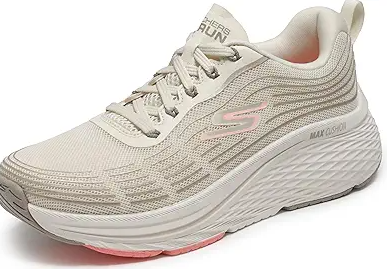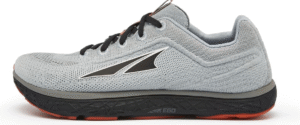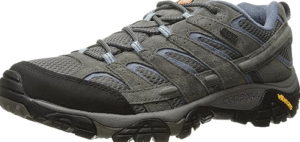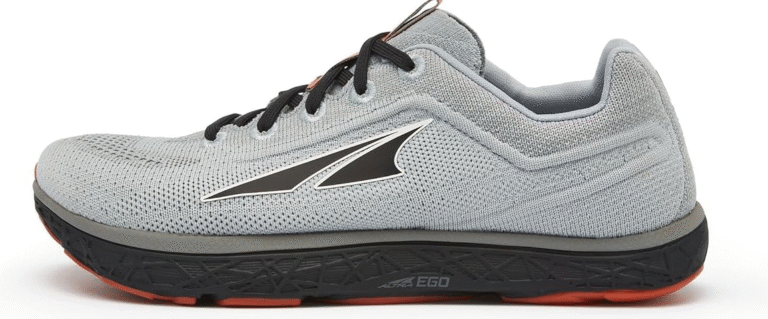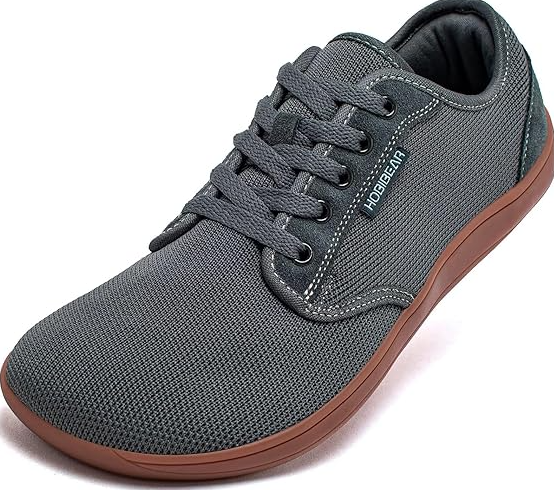Best Hiking Shoes for Morton’s Neuroma
5 Best Hiking Shoes For Morton's Neuroma | Top 03 Picks
5 Best Shoes | Detailed Features
Finding the right shoes that balance comfort, support, and durability can be a challenge—especially for those who spend long hours on their feet. The Skechers Women’s Max Cushioning Elite 2.0 is designed for just that. Whether you’re an athlete, a healthcare worker, or simply looking for all-day comfort, these shoes promise a cushioned experience like no other.
With its Air-Cooled Goga Mat insole, ULTRA GO midsole, and Natural Rocker Technology (NRT), this shoe enhances shock absorption and provides smooth heel-to-toe transitions. The breathable mesh upper ensures airflow, keeping your feet cool even during intense activity.
This pair is highly rated by users who praise its wide toe box, arch support, and long-lasting comfort. Many find relief from foot pain, making it an excellent choice for those with plantar fasciitis or sciatica. If you’re looking for a shoe that offers premium cushioning without compromising on style, this is a great investment.
Key Features of Skechers Women’s Max Cushioning Elite 2.0
1. Exceptional Comfort with Maximum Cushioning
The ULTRA GO midsole provides a lightweight yet highly responsive cushioning platform. Whether you’re walking, running, or standing for long hours, these shoes absorb impact efficiently, reducing stress on your feet and joints.
2. Air-Cooled Goga Mat Insole for Breathability
Unlike standard insoles, the Skechers Air-Cooled Goga Mat offers high-rebound cushioning while keeping your feet cool. This feature is ideal for warm climates or those who experience sweaty feet, as it enhances airflow and moisture control.
3. Natural Rocker Technology for Smooth Transitions
The built-in Natural Rocker Technology (NRT) ensures a seamless heel-to-toe transition, improving walking efficiency. This feature makes the shoes perfect for people with foot conditions or those who experience discomfort during prolonged standing.
4. Durable and Flexible Traction Outsole
The Ethylene Vinyl Acetate (EVA) outsole provides excellent grip, ensuring stability on various surfaces. Whether you’re walking on concrete, tile, or outdoor trails, these shoes deliver superior traction and durability.
5. Stylish and Versatile Design
With a breathable mesh upper and stylish color options, these shoes offer a modern look without compromising on function. Available in multiple sizes, including wide options, they cater to different foot shapes for a true-to-size fit.
Why Choose Skechers Women’s Max Cushioning Elite 2.0?
Ideal for individuals needing extra cushioning and arch support
Recommended for nurses, retail workers, and runners who spend long hours on their feet
Machine washable for easy maintenance
Highly rated for pain relief, especially for plantar fasciitis, sciatica, and high arches
Whether you’re looking for an everyday walking shoe or a supportive running sneaker, the Skechers Women’s Max Cushioning Elite 2.0 is a reliable choice that delivers all-day comfort and durability.
The Altra Footwear Escalante 2.5 is designed for runners and everyday users who prioritize comfort, flexibility, and a natural foot movement experience. Featuring a zero-drop design, this shoe encourages better posture and a balanced stride, making it ideal for both casual wear and athletic activities. The wide toe box allows your toes to spread naturally, enhancing stability and comfort, while the lightweight, breathable upper ensures a snug yet adaptive fit.
One of the standout features is the rubber sole, which provides excellent traction and durability. Whether you’re walking, jogging, or using them for gym workouts, the Escalante 2.5 offers a cushioned yet responsive ride. While it may not provide the rigid support of some stability shoes, it excels in offering a natural, barefoot-like feel.
If you’re looking for a comfortable, lightweight, and flexible running shoe, the Altra Escalante 2.5 is an excellent choice. Key Features
1. Zero-Drop Platform for a Natural Stride
Unlike traditional running shoes with elevated heels, the zero-drop sole in the Escalante 2.5 keeps your heel and forefoot at the same level. This promotes a more natural running posture, reducing strain on joints and encouraging better alignment. Runners who prefer minimalist footwear will appreciate the grounded feel.
2. Wide Toe Box for Maximum Comfort
A common complaint with standard running shoes is the restricted toe space, leading to discomfort and foot fatigue. The Escalante 2.5 features Altra’s signature FootShape™ toe box, allowing your toes to splay naturally. This not only enhances comfort but also improves balance and stability.
3. Lightweight and Breathable Knit Upper
The stretchable knit upper provides a sock-like fit, wrapping around your foot comfortably without feeling restrictive. The material is lightweight and highly breathable, making it ideal for long runs or all-day wear. It also adapts well to different foot shapes, ensuring a snug fit without causing pressure points.
4. Responsive Midsole Cushioning
Equipped with Altra EGO™ foam, the midsole delivers a perfect balance of soft cushioning and responsive energy return. Whether you’re running on pavement or using them for workouts, the shoes provide a smooth and comfortable ride. While not overly cushioned, they strike the right balance between support and flexibility.
5. Durable Rubber Outsole with Good Traction
The rubber outsole enhances grip and durability, making these shoes suitable for various surfaces. Whether you’re running on the road, treadmill, or light trails, the outsole provides enough traction to keep you stable. The durability ensures the shoes hold up well even with frequent use.
Final Thoughts
The Altra Escalante 2.5 is a fantastic choice for runners and individuals who value a natural, barefoot-style running experience. With its zero-drop platform, wide toe box, lightweight upper, and responsive cushioning, it stands out as a comfortable, versatile, and well-designed shoe. While it may not be the best option for those needing extra arch support or maximum stability, it excels in providing a flexible and lightweight ride.
If you’re looking for a comfortable and durable shoe that allows for a natural foot movement, this is a great investment.
When it comes to hiking shoes that offer durability, comfort, and waterproof protection, the Merrell Women’s Moab 2 Waterproof Hiking Shoe stands out. Known as the “Mother of All Boots” (MOAB), this shoe is designed for women who love the outdoors and need reliable footwear for wet, rugged, and uneven terrain.
The waterproof membrane keeps feet dry while allowing moisture to escape, ensuring breathability. Its pigskin leather and mesh upper add to its durability, while the protective toe cap shields against rough trails. Whether you’re walking on rocky paths, muddy trails, or steep inclines, the Vibram outsole provides excellent traction.
Hikers appreciate the secure fit, cushioned support, and long-lasting comfort of these shoes. If you need a waterproof, sturdy, and comfortable option for outdoor adventures, this is a great investment.
Key Features of the Merrell Women’s Moab 2 Waterproof Hiking Shoe
1. Exceptional Waterproof Protection
Keeping your feet dry is crucial for outdoor hikes, and the Merrell Moab 2 excels in this area with:
A waterproof membrane that blocks water while allowing sweat to escape.
A breathable mesh lining to prevent overheating.
Protection from unexpected rain, puddles, and wet trails.
2. Durable & Supportive Construction
This hiking shoe is built to last, featuring:
A pigskin leather and mesh upper for long-term durability.
A protective toe cap to guard against sharp rocks and rough terrain.
A traditional lace-up closure for a secure fit.
3. Enhanced Comfort for Long Hikes
Comfort matters when you’re trekking for hours. The Moab 2 offers:
A supportive footbed that provides all-day cushioning.
An ergonomic fit that helps reduce foot fatigue.
A soft yet sturdy midsole for extra comfort.
4. Superior Traction with Vibram Outsole
Stability and grip are essential on rugged paths. This shoe features:
A Vibram outsole with excellent traction on various surfaces.
A bellows tongue to keep out dirt, debris, and small rocks.
A well-balanced sole for extra grip on wet or dry trails.
5. Trusted by Hikers & Outdoor Enthusiasts
Many hikers and adventurers praise the Merrell Moab 2 for:
Its secure fit and arch support, making it ideal for long hikes.
The ability to handle rocky, uneven, and steep terrains.
Consistent waterproofing that holds up over time.
If you’re looking for a rugged, comfortable, and waterproof hiking shoe, the Merrell Moab 2 is a reliable choice.
Hiking requires the right footwear to keep your feet comfortable and protected on rugged trails. The Merrell Women’s Moab 3 Waterproof Hiking Shoe is designed to provide exceptional durability, stability, and waterproof protection, making it a top choice for outdoor enthusiasts.
Built with pigskin leather and breathable mesh, this shoe offers durability without compromising comfort. The Vibram TC5+ rubber sole provides outstanding traction, ensuring a secure grip on various terrains. With a Merrell Air Cushion in the heel, it absorbs shock and enhances stability, reducing foot fatigue during long hikes.
One of its standout features is the Kinetic Fit ADVANCED removable insole, which offers reinforced heel cushioning for medium support. Whether you’re hiking on wet trails or rocky surfaces, this shoe’s waterproof construction keeps your feet dry, while the bellows tongue design prevents debris from entering.
If you’re looking for a reliable waterproof hiking shoe, the Merrell Moab 3 is an excellent choice. Designed for both beginners and experienced hikers, it provides the perfect blend of protection, comfort, and traction.
Key Features
1. Durable and Breathable Design
Made from pigskin leather and mesh, this shoe ensures durability while allowing airflow to keep your feet cool. The 100% recycled laces and webbing contribute to eco-friendly construction.
2. Superior Traction with Vibram TC5+ Sole
The Vibram TC5+ rubber sole provides excellent grip on wet, rocky, and uneven surfaces. Whether you’re trekking through muddy trails or dry terrain, you can trust the stability and traction of these shoes.
3. Waterproof Protection for All Conditions
The Moab 3’s waterproof membrane seals out moisture, keeping your feet dry in wet or rainy conditions. It’s perfect for unpredictable weather and water crossings.
4. Shock Absorption and Stability
The Merrell Air Cushion in the heel absorbs shock and provides extra stability, reducing foot fatigue. Paired with a lightweight EVA foam midsole, this shoe ensures all-day comfort.
5. Comfortable and Supportive Fit
With a Kinetic Fit ADVANCED removable insole, the Moab 3 provides enhanced arch support and reinforced heel cushioning. It’s designed to adapt to your foot’s natural movement, making long hikes more comfortable.
Final Thoughts
The Merrell Women’s Moab 3 Waterproof Hiking Shoe is a dependable companion for hikers looking for comfort, durability, and excellent grip. Whether you’re an occasional hiker or a seasoned adventurer, this shoe delivers the support and performance needed for any trail.
Overview
The HOBIBEAR Barefoot Minimalist Shoes are designed for those who prioritize natural movement, comfort, and flexibility. Featuring a wide toe box, these shoes allow your feet to spread naturally, reducing pressure and promoting better posture. The zero-drop, non-elevated sole encourages a balanced and aligned gait, making them an excellent choice for individuals transitioning to barefoot-style footwear.
Constructed with a lightweight and breathable knitted upper, these shoes ensure maximum comfort throughout the day, whether you’re walking, working out, or just running errands. The flexible rubber sole provides a good grip while maintaining the barefoot feel, making them ideal for casual wear, gym workouts, or travel. Machine washable and available in a variety of stylish colors, the HOBIBEAR Barefoot Minimalist Shoes combine fashion with function at an affordable price.
If you’re searching for a zero-drop shoe with a wide toe box, these shoes are a great option. Many customers have compared them to premium brands and found them to be a great alternative for those with foot conditions like Morton’s neuroma or high arches.
Key Features
1. Wide Toe Box for Natural Foot Alignment
The extra-wide toe box allows your toes to spread naturally, reducing the risk of foot pain and promoting proper foot posture. Unlike traditional shoes that squeeze your toes, these shoes offer a comfortable and roomy fit, making them ideal for flat feet, bunions, or Morton’s neuroma.
2. Zero-Drop Sole for Proper Posture
With a completely flat, non-elevated sole, these shoes encourage a more natural walking and standing position. This helps to reduce strain on your knees, hips, and lower back, making them a great choice for those transitioning to minimalist footwear.
3. Lightweight and Breathable Knitted Upper
The engineered mesh upper provides excellent breathability, keeping your feet cool and dry. This flexible material allows for natural movement freedom, making these shoes a great option for work, travel, and everyday activities. Plus, they are machine washable for easy maintenance.
4. Thin and Flexible Rubber Sole for a True Barefoot Feel
The thin, abrasion-resistant rubber outsole enhances ground contact, allowing you to feel the surface beneath your feet. This improves balance and stability, especially for those who practice barefoot-style walking or running. While the sole is not ideal for hiking on rough terrain, it provides good grip for casual walks, gym workouts, and daily use.
5. Stylish and Affordable Alternative to Expensive Barefoot Shoes
Many minimalist shoes with similar features are much more expensive, but HOBIBEAR offers a budget-friendly option without compromising on comfort or quality. With multiple color choices, these shoes are fashionable enough for daily wear, making them one of the best value zero-drop shoes available.
Morton’s neuroma occurs when the nerve between the toes, usually the third and fourth, becomes compressed and irritated. It often feels like you are standing on a pebble, accompanied by sharp pain, burning, or numbness in the affected area. Tight shoes, high-impact activities, and improper foot support can worsen the condition. That’s why choosing the right footwear is crucial to keeping pain at bay while hiking.
Why Choosing the Right Hiking Shoes Matters
Wearing the wrong hiking shoes can increase pressure on the forefoot, worsen inflammation, and make hikes unbearable. The right pair should provide ample space, cushioning, and support to minimize nerve irritation. Well-designed shoes can make all the difference between cutting your hike short and confidently exploring the trails.
Key Features to Look for in Hiking Shoes for Morton’s Neuroma
Not all hiking shoes are created equal, especially when dealing with foot pain. Here are the essential features to consider:
Wide Toe Box for Toe Spread
A spacious toe box allows your toes to splay naturally, reducing compression on the nerve. Shoes that are too narrow can worsen symptoms, leading to more discomfort over time. Look for brands that offer wide-fitting options or a natural foot shape design.
Cushioning and Shock Absorption
Since Morton’s neuroma is aggravated by impact, shoes with adequate cushioning in the midsole and forefoot help absorb shock. EVA foam, gel inserts, or specialized padding can reduce pressure and provide a more comfortable walking experience.
Arch Support and Stability
Proper arch support ensures even weight distribution and prevents excessive pressure on the ball of your foot. If you have high arches, look for structured support; if you have flat feet, opt for shoes with moderate arch support or customizable insoles.
Zero Drop vs. Low Heel-to-Toe Drop
Zero-drop shoes keep the heel and forefoot at the same level, promoting a more natural foot position. Some hikers find these beneficial for reducing foot strain, while others may prefer a low heel-to-toe drop (4-8mm) for added support.
Flexible vs. Rigid Sole: What’s Better?
A flexible sole allows for a natural foot movement, but excessive flexibility can lack stability. A moderately stiff sole with some bend at the forefoot is ideal for preventing excessive pressure on the ball of the foot.
Lightweight vs. Heavy Hiking Shoes
Lightweight hiking shoes reduce foot fatigue and make long hikes more manageable. Heavy-duty boots might provide extra durability, but they can also add strain on the feet, especially for those with nerve pain.
Breathability and Material Considerations
Breathable materials, such as mesh or lightweight synthetic uppers, keep your feet cool and dry. Moisture buildup can lead to discomfort and blisters, so prioritize shoes with moisture-wicking linings and ventilation.
Adjustable Fit and Lacing System
A customizable fit is essential for relieving pressure points. Look for shoes with adjustable lacing systems, which allow you to loosen the forefoot area if needed. Some hikers find that skipping the bottom eyelets can help alleviate discomfort in the toe region.
Choosing the right hiking shoes for Morton’s neuroma requires attention to detail, but the right pair can transform your hiking experience. In the next section, we will explore the best hiking shoe options that cater to this condition.
Best Types of Hiking Shoes for Morton’s Neuroma
Choosing the right type of hiking shoe can make a significant difference in your comfort and foot health. Let’s break down the options and see which one suits your needs best.
Trail Running Shoes vs. Hiking Boots
Trail running shoes are lightweight, flexible, and well-cushioned, making them a great choice for those with Morton’s neuroma. They often have a wider toe box and better shock absorption, reducing pressure on the forefoot.
Hiking boots, on the other hand, provide more ankle support and durability, but some models can be too stiff and narrow. If you prefer boots, look for models with a wide fit, soft cushioning, and a flexible sole to avoid aggravating nerve pain.
Low-Cut vs. Mid-Cut vs. High-Cut Hiking Shoes
-
Low-Cut: These are similar to trail running shoes, offering flexibility and a lightweight feel. Ideal for casual hiking on well-maintained trails.
-
Mid-Cut: These provide some ankle support without being overly restrictive. A good middle-ground for those who need stability but don’t want bulky boots.
-
High-Cut: Best for rugged terrain and heavy backpacking, but they can be too stiff for people with Morton’s neuroma. If you choose high-cut boots, ensure they have ample toe room and cushioning.
Barefoot or Minimalist Hiking Shoes: Are They Suitable?
Minimalist shoes promote natural foot movement, but they lack the cushioning and arch support needed for managing Morton’s neuroma. While some hikers find relief in zero-drop shoes with a wide toe box, these may not be the best option for long-distance hikes or rough terrain.
Orthopedic and Customizable Hiking Shoes
For those with severe nerve pain, orthopedic hiking shoes or customizable options are worth considering. Some brands allow you to swap insoles, adjust fit, or even get a custom-molded shoe to match your foot shape. These provide targeted support and can significantly improve hiking comfort.
Add Your Heading Text Here
Lorem ipsum dolor sit amet, consectetur adipiscing elit. Ut elit tellus, luctus nec ullamcorper mattis, pulvinar dapibus leo.
Top Hiking Shoe Brands for Morton’s Neuroma
Certain brands stand out for their comfort, wide-fit options, and foot-friendly designs. Here are some of the best shoes for Morton’s neuroma brands:
Altra
Altra is known for its FootShape™ toe box, which allows toes to spread naturally. Their zero-drop design promotes a more balanced stride, reducing pressure on the forefoot. Models like the Altra Lone Peak are popular among hikers with foot conditions.
HOKA ONE ONE
HOKA shoes offer maximum cushioning and shock absorption, making them a top choice for hikers with Morton’s neuroma. Their rockered sole helps distribute weight evenly, reducing pressure on painful areas. The HOKA Speedgoat is a well-loved option for trail hiking.
New Balance
New Balance produces hiking shoes and trail runners in wide sizes, making them ideal for those who need extra toe room. Their Fresh Foam X Hierro model provides plush cushioning and stability for long hikes.
Merrell
Merrell hiking shoes are lightweight and often come with contoured footbeds that support natural alignment. The Merrell Moab series is a reliable option, offering breathability, cushioning, and a roomy toe box.
KEEN
KEEN is a favorite among hikers with foot pain due to its wide toe box and arch support. Models like the KEEN Targhee and KEEN Ridge Flex provide durability and comfort for various terrains.
Brooks
Though mainly known for running shoes, Brooks makes excellent trail runners that work well for hiking. Their DNA Loft cushioning and wide options help relieve forefoot pressure. The Brooks Cascadia is a solid choice for rugged trails.
Other Recommended Brands
Topo Athletic: Similar to Altra, offering a wide toe box with moderate drop for added support.
Oboz: Great for stability and support, with cushioned insoles and roomy designs.
Salomon (Wide Versions): Known for durability and traction, but choose wide-fit models to accommodate neuroma-related discomfort.
Each of these brands offers unique features, so finding the right pair depends on your specific foot needs and hiking style. Always test shoes for fit and comfort before committing to long hikes.
Insoles and Orthotics for Extra Comfort
Hiking with Morton’s neuroma can be painful, but the right insoles or orthotics can provide significant relief. By redistributing pressure and offering proper arch support, they help reduce nerve irritation and improve overall foot comfort.
Benefits of Using Custom Orthotics
Custom orthotics are designed specifically for your foot shape and condition, providing targeted support where you need it most. Benefits include:
- Pressure Redistribution: Reduces stress on the forefoot and metatarsal area.
- Better Arch Support: Helps maintain proper foot alignment, preventing excessive strain.
- Shock Absorption: Minimizes impact on rough terrain, protecting sensitive nerves.
- Personalized Fit: Made based on your foot structure, ensuring maximum comfort.
Custom orthotics can be costly, but they are worth considering for severe cases of Morton’s neuroma, especially if you plan on long hikes.
Best Over-the-Counter Insoles for Morton’s Neuroma
If custom orthotics aren’t an option, high-quality over-the-counter insoles can still provide significant relief. Some of the best options include:
- PowerStep Pinnacle Plus: Offers metatarsal support and arch cushioning.
- Superfeet Green Insoles: Provides firm arch support and shock absorption.
- Dr. Scholl’s Pain Relief for Ball of Foot: Specifically designed for forefoot pain relief.
- Sof Sole Airr Orthotic Insoles: Features gel cushioning and reinforced arch support.
When choosing an insole, look for features like metatarsal pads, extra cushioning, and a deep heel cup for stability.
How to Choose the Right Insole for Your Hiking Shoes
Not all insoles fit well in hiking shoes, so consider these factors:
- Arch Type: Match your insole to your foot’s arch (low, medium, or high).
- Metatarsal Support: Ensures proper weight distribution to relieve pressure on nerves.
- Compatibility with Your Shoes: Check if the insole fits without making the shoe too tight.
- Material & Durability: Gel or foam insoles provide more cushioning, while firmer orthotics offer better arch support.
If possible, test the insoles with your hiking shoes before heading out on a long hike to ensure they provide the comfort and relief you need.
Lorem ipsum dolor sit amet, consectetur adipiscing elit. Ut elit tellus, luctus nec ullamcorper mattis, pulvinar dapibus leo.
Tips for Hiking with Morton’s Neuroma
Even with the best hiking shoes and insoles, managing foot pain on the trail requires some extra precautions. Here are some essential tips to help you hike comfortably.
Choosing the Right Socks for Comfort
The right socks can make a huge difference in reducing friction and providing extra cushioning. Look for:
Thick, padded socks: Extra cushioning can help absorb shock and reduce pressure on your forefoot.
Moisture-wicking materials: Keep feet dry to prevent irritation and blisters.
Toe socks: These separate the toes, reducing compression and pressure in the forefoot area.
Avoid cotton socks, as they trap moisture and increase the risk of blisters and discomfort.
Lacing Techniques to Reduce Pressure
The way you lace your hiking shoes can help relieve pressure on the forefoot and improve overall comfort. Try these techniques:
Window Lacing: Skip lacing over the forefoot area to reduce compression.
Heel Lock Lacing: Helps keep the heel secure, preventing sliding that can worsen pain.
Looser Forefoot Lacing: Leave the toe area slightly looser to allow more room for toe splay.
Experiment with different lacing styles to find what works best for your foot shape and pain levels.
Taking Breaks and Foot Stretches
Long hikes can put extra strain on your feet, so take breaks and stretch regularly. Try these simple foot exercises:
Toe Spreading: Spread your toes apart and hold for a few seconds to relieve tension.
Calf and Arch Stretch: Stretching your calves and arch can reduce strain on the forefoot.
Rolling a Ball Underfoot: Using a small ball to massage your arch can help relieve nerve pressure.
Taking short breaks every hour can prevent pain from building up and help you hike longer with more comfort.
Managing Pain and Swelling on the Trail
If you start feeling pain or numbness while hiking, take immediate steps to prevent it from worsening:
Apply Ice Packs: If possible, use a cold pack or cool stream water to reduce swelling.
Elevate Your Feet: Prop your feet up during rest stops to improve circulation.
Use Anti-Inflammatory Creams: Some hikers find relief from creams with menthol or arnica.
Take OTC Pain Relievers: Ibuprofen or acetaminophen can help manage pain, but consult your doctor before use.
By taking care of your feet before, during, and after a hike, you can reduce discomfort and enjoy the outdoors without letting Morton’s neuroma hold you back.
Common Mistakes to Avoid When Choosing Hiking Shoes
Selecting the wrong hiking shoes can make Morton’s neuroma symptoms worse. Here are common mistakes hikers make and how to avoid them.
Buying Shoes That Are Too Tight
One of the biggest mistakes is choosing shoes that fit snugly, assuming they’ll stretch over time. Tight shoes put excessive pressure on the forefoot, worsening nerve pain. Always:
Opt for a wide toe box to allow natural toe splay.
Try shoes in the afternoon when feet are slightly swollen for a more accurate fit.
Walk around in them for at least 10–15 minutes before making a decision.
Ignoring Arch Support Needs
Proper arch support is crucial to prevent excessive pressure on the ball of the foot. Lack of support can cause improper weight distribution, leading to discomfort and worsened neuroma pain. Choose shoes with:
Built-in arch support or compatibility with custom orthotics.
A firm midsole to maintain proper foot alignment.
A neutral or stability design based on your foot type.
Choosing Heavy and Rigid Shoes Without Testing Them
While sturdy hiking boots provide durability, they can be too stiff and heavy for someone with Morton’s neuroma. A rigid sole may restrict natural foot movement, increasing pain. To ensure a comfortable choice:
Look for a flexible forefoot to reduce pressure on the ball of the foot.
Choose a shoe that feels lightweight yet supportive for long hikes.
Bend the shoe slightly to check moderate flexibility—too much rigidity can be problematic.
Not Considering Terrain and Hiking Duration
Not all hiking shoes work for every trail. Choosing the wrong type can lead to foot fatigue and increased pain. Consider:
Short day hikes: Lightweight, cushioned trail runners or low-cut hiking shoes.
Rough terrain or long hikes: Mid-cut boots with ample padding and arch support.
Wet or rocky trails: Shoes with good traction and a secure fit to prevent slipping.
Always match your footwear to the type of hike you plan to avoid unnecessary foot strain.
FAQs
Can I Hike with Morton’s Neuroma?
Yes, you can still enjoy hiking with Morton’s neuroma by choosing the right footwear, using proper insoles, and following pain management strategies. Avoid shoes that compress the forefoot, and take breaks when needed to stretch and rest your feet.
Should I Go for a Half Size Bigger for Comfort?
Going half a size up can be beneficial, especially if you wear thick hiking socks or orthotic insoles. However, make sure the shoe isn’t too loose, as excess movement inside the shoe can cause friction and blisters. The ideal fit allows room for toe splay without your foot sliding forward.
Are Waterproof Hiking Shoes Better or Worse?
Waterproof shoes keep your feet dry in wet conditions but may lack breathability, leading to excessive sweating and discomfort. If you mostly hike in dry conditions, breathable mesh hiking shoes may be a better choice. If you need waterproof shoes, look for ones with a wide toe box and moisture-wicking lining to keep your feet comfortable.
Recent Posts

Best Hiking Shoes for Morton’s Neuroma
Best Hiking Shoes for Morton’s Neuroma Hiking should be an enjoyable and pain-free experience, but for those dealing with Morton’s

